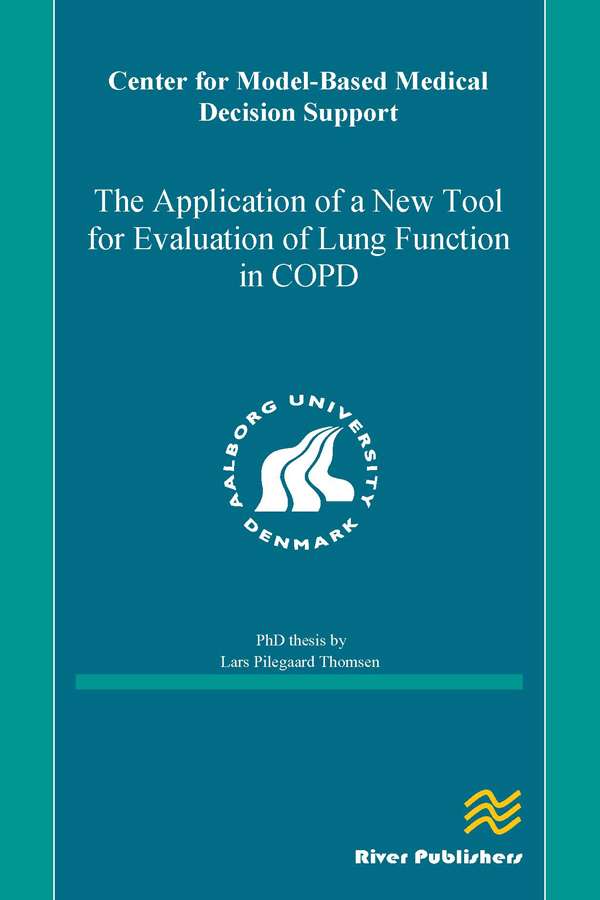River Publishers Series in
The Application of a New Tool for Evaluation of Lung Function in COPD
Author: Lars Pilegaard Thomsen, Center for Model-Based Medical Decision Support, Department of Health Science and Technology, Aalborg University, Aalborg, Denmark
The diagnosis and classification of COPD can be seen as the difficult task of describing a heterogeneous disease
affecting a complex organ, using relatively simple measurements. Combining these measurements and thus
describing the impact of disease on the lung and its functional capacity can provide additional information
enabling the clinician to succeed in this task. In this context, this thesis has investigated the clinical description
of pulmonary gas exchange abnormalities, the current standard (DLCO), the reference experimental technique
(MIGET), and a new alternative (ALPE). The aim of the thesis has been to investigate the challenges ALPE faces
in patients suffering from COPD (paper I) and if possible to present and evaluate new methods to overcome
these challenges (paper II). Furthermore, integration of ALPE with routinely available clinical measurement and
its relation to HRCT-scans was evaluated (paper III).
The basics of the ALPE method is a mathematical model of pulmonary gas exchange. The thesis presents a novel method that allows this steady state model of gas exchange to be parameterized using breath by breath data. The principle of the method lies in estimation of delay in SpO2 measurements due to systemic circulation, and with this a corrected dataset for usage with the model can be constructed. The new method was evaluated in patients suffering from COPD and was shown to deliver equivalent results as the traditional steady state method. Another contribution of the thesis, has been the construction of a causal probabilistic network, where routinely available clinical measurement and ALPE is integrated. The network was shown to be able to categorize four well defined cases of COPD, similarly to the radiologic description obtained from HTCT-scans. This thesis has demonstrated, that ALPE may possibly be used as a tool for functional description in patients suffering from COPD. The developed causal network integrating ALPE with other routinely available measurements, may be used to target radiologic phenotypes of COPD, possibly in long-term clinical cohort studies or in daily clinical practice.
The basics of the ALPE method is a mathematical model of pulmonary gas exchange. The thesis presents a novel method that allows this steady state model of gas exchange to be parameterized using breath by breath data. The principle of the method lies in estimation of delay in SpO2 measurements due to systemic circulation, and with this a corrected dataset for usage with the model can be constructed. The new method was evaluated in patients suffering from COPD and was shown to deliver equivalent results as the traditional steady state method. Another contribution of the thesis, has been the construction of a causal probabilistic network, where routinely available clinical measurement and ALPE is integrated. The network was shown to be able to categorize four well defined cases of COPD, similarly to the radiologic description obtained from HTCT-scans. This thesis has demonstrated, that ALPE may possibly be used as a tool for functional description in patients suffering from COPD. The developed causal network integrating ALPE with other routinely available measurements, may be used to target radiologic phenotypes of COPD, possibly in long-term clinical cohort studies or in daily clinical practice.
diagnosis and classification
